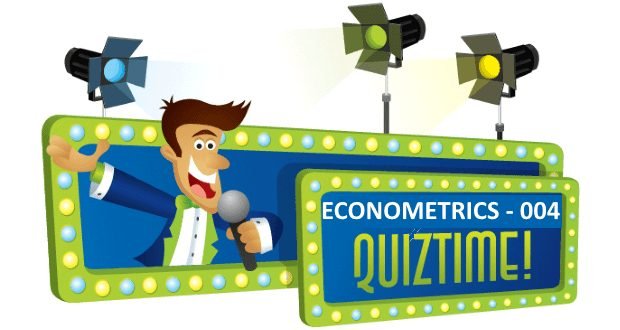500 câu trắc nghiệm Kinh tế lượng – 12A

Solve the problem.
7) In the sign test procedure the most common approach to handling ties is to exclude the ties. A second approach is to treat half the 0s (representing ties) as positive signs and half as negative signs. In this approach, if the number of ties is odd, one tie is excluded so that they can be divided equally. In a sign test for matched pairs with a claim that the median of the differences is equal to zero, there are 36 positive signs, 56 negative signs, and 23 ties. Identify the test statistic and conclusion for the two different methods. Use a significance level of 0.05.
Approach 1:
Test statistic: z = -1.98, Critical values: z = ±1.96.
Reject the null hypothesis that the median of the differences is zero.
Approach 2:
Test statistic: z = -1.78, Critical values: z = ±1.96.
Do not reject the null hypothesis that the median of the differences is zero.
Use a Kruskal-Wallis test to test the claim that the samples come from identical populations.
8) The table below shows the lifetimes (in hours) of random samples of light bulbs of three different brands. Use a 0.01 significance level to test the claim that the samples come from identical populations.
| Brand A | Brand B | Brand C |
| 190 | 182 | 203 |
| 220 | 170 | 210 |
| 230 | 203 | 199 |
| 215 | 175 | 200 |
| 224 | 178 | 196 |
| 231 | 181 | 197 |
Test statistic: H = 10.371. Critical value is 9.210.
Reject the null hypothesis. There is sufficient evidence to warrant rejection of the claim that the samples come from identical populations.
Use the rank correlation coefficient to test the claim of no correlation between the two variables.
9) Given that the rank correlation coefficient, rs, for 39 pairs of data is 0.296, test the claim of no correlation between the two variables. Use a significance level of 0.01.
rs = 0.296. Critical values: rs = ±0.418.
No significant correlation. There does not appear to be a correlation between the two variables
10) The scores of twelve students on the midterm exam and the final exam were as follows.

Find the rank correlation coefficient and test the claim of no correlation between midterm score and final exam score. Use a significance level of 0.05.
rs = 0.706. Critical values: rs = ±0.591.
Significant correlation. There appears to be a correlation between midterm score and final exam score
11) Ten trucks were ranked according to their comfort levels and their prices.

Find the rank correlation coefficient and test the claim of no correlation between comfort and price. Use a significance level of 0.05.
rs = 0.382. Critical values: rs = ±0.648.
No significant correlation. There does not appear to be a correlation between comfort and price
Use the runs test to determine whether the given sequence is random. Use a significance level of 0.05.
12) A true-false test had the following answer sequence.
T T T T F T F T F T F T T F T
T T F F F F F F F T F T F T F
Test the null hypothesis that the sequence was random.
n1= 15, n2= 15, G = 18, 5% cutoff values: 10, 22.
Fail to reject the null hypothesis of randomness
13) The sequence of numbers below represents the maximum temperature (in degrees Fahrenheit) in July in one U.S. town for 30 consecutive years. Test the sequence for randomness above and below the median.
| 94 | 96 | 97 | 99 | 95 | 90 | 97 | 98 | 100 | 100 |
| 92 | 95 | 98 | 99 | 102 | 97 | 97 | 101 | 99 | 100 |
| 98 | 95 | 93 | 99 | 101 | 99 | 101 | 100 | 99 | 103 |
n1= 15, n2= 15, G = 10, 5% cutoff values: 10, 22.
Reject the null hypothesis of randomness
14) Test the sequence of digits below for randomness above and below the value of 4.5.
| 0 | 4 | 7 | 3 | 6 | 0 | 9 | 7 | 4 | 8 |
| 7 | 2 | 8 | 5 | 7 | 3 | 9 | 6 | 4 | 6 |
| 4 | 7 | 9 | 1 | 6 | 1 | 9 | 5 | 8 | 3 |
| 7 | 8 | 5 | 7 | 3 | 5 | 2 | 9 | 3 | 8 |
1= 15, n2= 25, G = 28, mG= 19.75, sG= 2.9212.
Test statistic: z = 2.82. Critical values: z = ±1.96.
Reject the null hypothesis of randomness.
MULTIPLE CHOICE. Choose the one alternative that best completes the statement or answers the question.
Solve the problem.
15) When performing a rank correlation test, one alternative to using Table A-9 to find critical values is to compute them using this approximation:
\({r_s} = \pm \sqrt {\frac{{{t^2}}}{{{t^2} + n – 2}}} \)
where t is the t-score from Table A-3 corresponding to n – 2 degrees of freedom. Use this approximation to find critical values of rs for the case where n = 17 and \(\alpha \) = 0.05.
○ ± 0.411
○ ± 0.311
○ ± 0.480
● ± 0.482